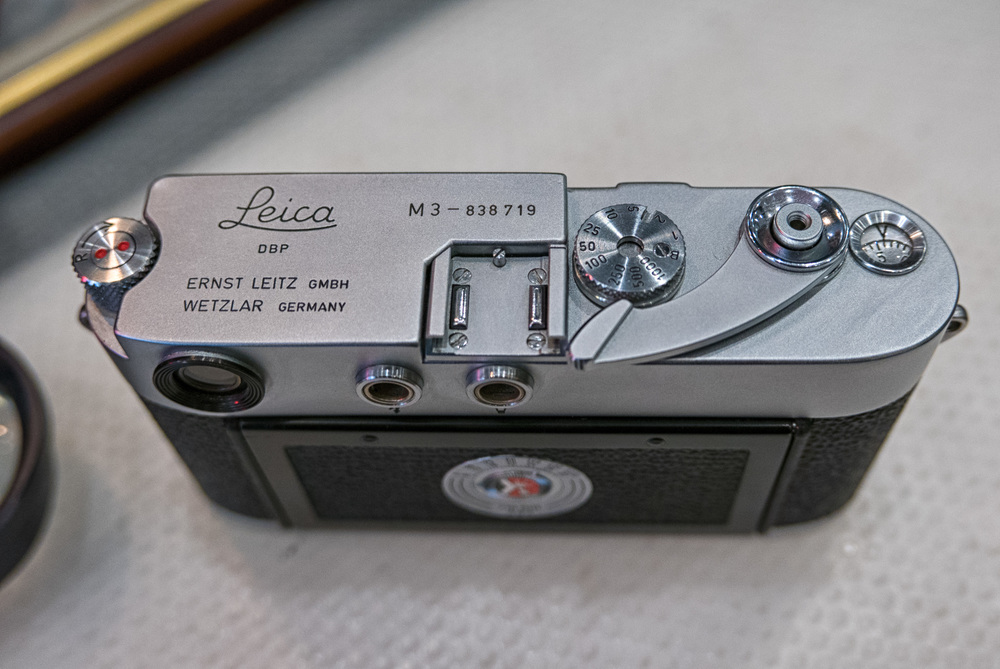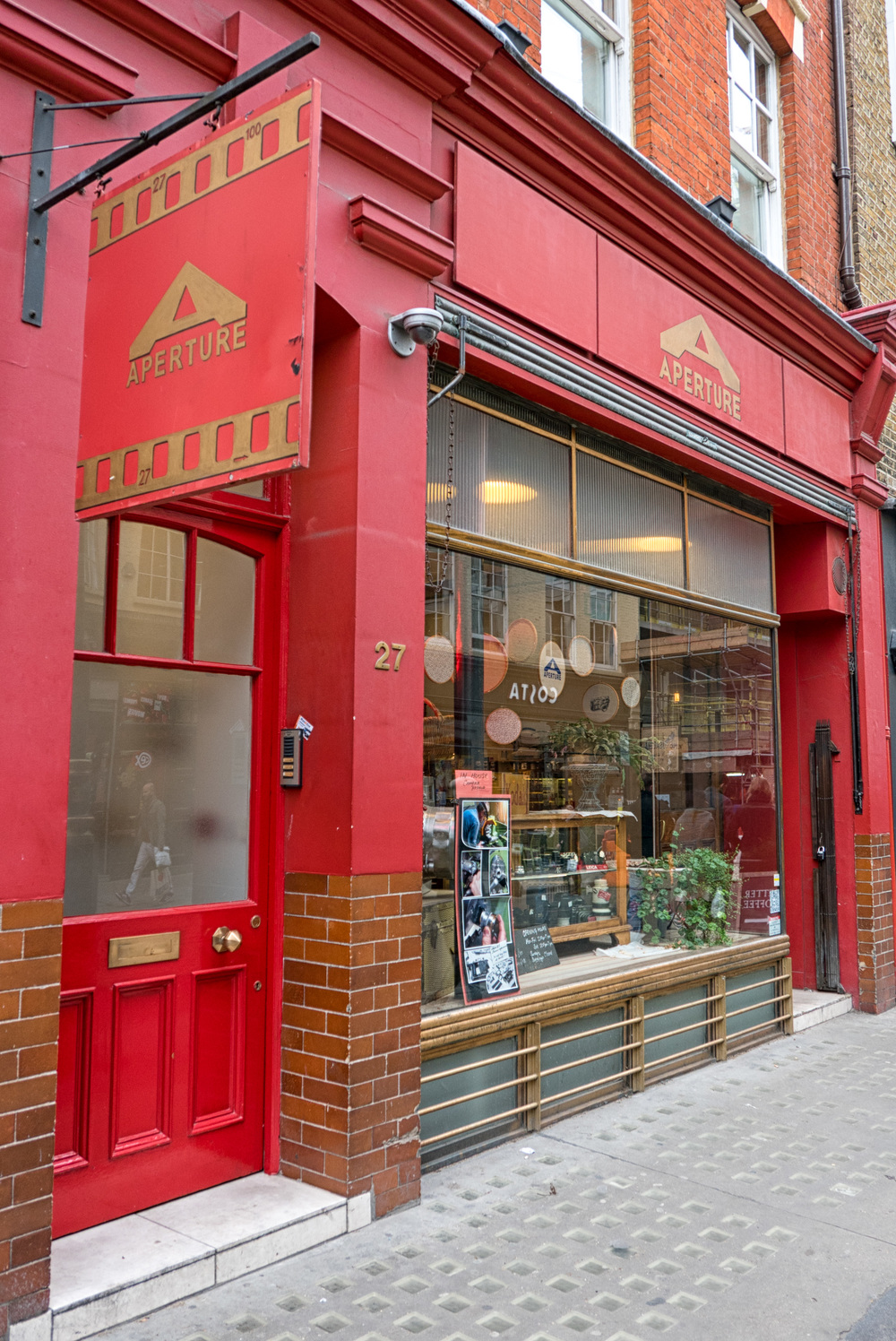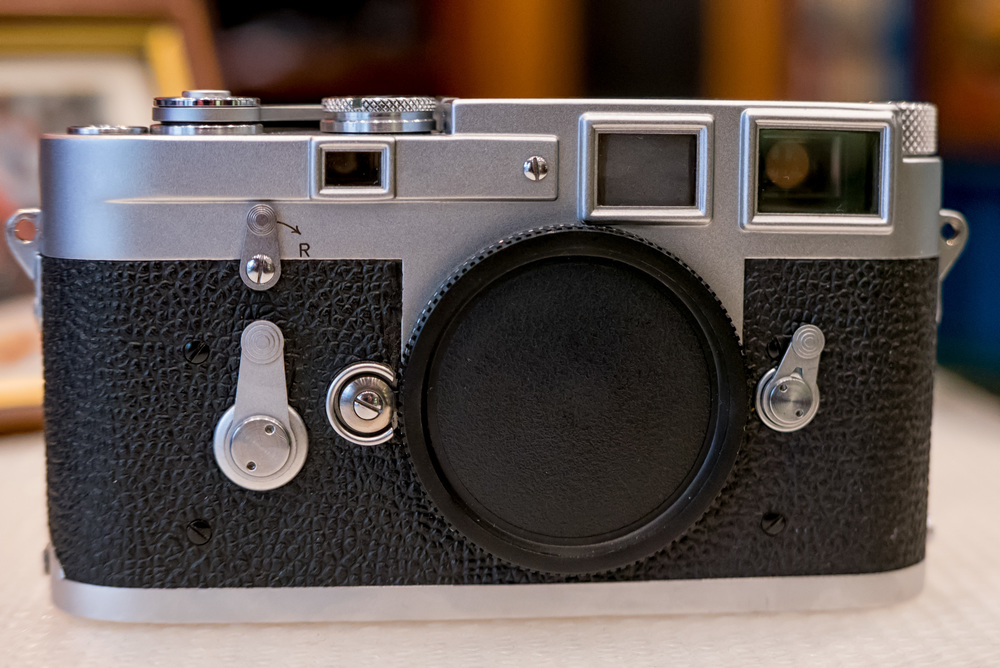The Leica M3, the first M camera which was introduced in 1954, is still one of the most sought-after retro shooters even after 60 years. It is increasingly favoured by younger photographers who appreciate the purity of a perfectly built, quality instrument that performs as well in 2015 and it did all those decades ago.
Film is making a comeback, perhaps as a protest against the all-pervading feature creep of modern digitals but, I suspect, mainly because a film camera offers a pure, no-frills photographic experience. This renewed popularity of film is nowhere more evident than in the Far East, particularly in Japan and in Hong Kong as I found on my recent visit to the former colony.
Of all the vintage film cameras on the market, some for for as little as £25, it is Leica that grabs most of the attention. As a result, the prices are in line with the original high cost. Half a century ago a Leica film camera had a hefty price tag of around £125, equivalent to £3,500 in today’s money. This is very much the same as you will pay for a new new Leica film camera. However, unlike digital cameras, where a year or two makes a world of difference in terms of imagine quality, all Leica film Ms are capable of the same excellent results, irrespective of age.
You can pick up a decent M3 for between £350 and £800, depending on condition, from a number of sources including Peter Loy, MW Classics, Red Dot Cameras and Aperture Photographic, to name but four of my favourite recommended dealers.
Most purchases, though, will need a little attention after upwards of half a century and a CLA (clean, lube, adjust) is a wise investment at around £150 on top of the asking price. A completely refurbished, ready-to-go example is relatively unusual and I was drawn to this early 1956 M3 when I saw it today in Aperture’s store at 27 Rathbone Place, near Tottenham Court Road station.
The previous owner had sent it back to Germany last year for a €1,000 refurbishment so it will not be in need of any attention for some years. As a 1956-made camera it originally featured the double-stroke film advance mechanism which was standard until 1958. The designers of the quick-lever advance had feared that the sudden strain could break the film, so two half advances were introduced as a precautionary measure. From 1958 and serial number 915251 the single-stroke mechanism was introduced. This particular camera has been factory converted, probably around 1960 I would imagine, to the later single-stroke operation.
While the M3 is one of the most popular film Ms to dangle around your neck, it has one disadvantage. There are no 35mm framelines. For this reason many prefer the M2, which was a concurrent but slightly cheaper version of the M3, or the later M4 which is the last of the M cameras without built-in light metering.
If, however, you favour a nifty fifty lens and you are looking for a good M3 guaranteed to be in pristine condition, this 1956 classic is a good buy. Aperture is listing it at £790.




I own both an M3 in pristine condition and an M7. I have to say that while I love both cameras, I prefer shooting with the M3 and a 50mm Summicron. The finder is just better, and there is something silky smooth about the shutter release that that M7 does not match. I use a Leicameter MR-4 with the M3, and sometime an MC. While a lot of people prefer TTL metering, there is something to be said for being able to check the light without having to raise the camera to your eye, particularly in street photography. I often remove the meter when shooting black and white. I’ve learned to read the light with my eyes. It’s not that hard. Shooting meterless with an M3 is a joy all of its own. I’ve tried the MP and the M-A but neither of them come close to the feel of the M3. I mentioned this to a salesperson at the Leica store in Ginza, and he said that the M3 was simply made to higher standards in its day. He claimed that if the M3 were made today, it would have a retail price of ¥3 million, which is about $25,000. Think about that. If you have an M3 in good condition, you have a $25,000 camera.
I agree with you on the M3, especially on the finder if you can get by without 35mm framelines. I’m not entirely convinced on the $25k price tag but your salesperson could have something when he suggests that the M3 was built to higher standards than the modern Leicas such as the MP and M-A. I haven’t tried the M-A (memo to self: Ask if I can borrow one from Leica…) but all Ms–3, 4, 5, 6 and 7 have their own character. Although I have an M7 I am not convinced; it feels just like a modern digital M.
I shoot mostly with the 50mm Summicron, as 50mm is the M3’s sweet spot. I find that when I shoot with the 50mm, I never feel encumbered. I just see the world in 50mm. I have the goggled 35mm Summicron too. That lens is brilliant, but it a bit heavier. When I shoot with the M7, which has a .72 finder, it is mostly with a 28mm Elmarit. Sometimes, I put the goggled Summicron 35mm on the M7, which works fine. The finder selects the 50mm frame. The M7 looks really interesting with goggles, which also cover up the red Leica dot. Leica aficionados do a double-take when they see it.
My with goggles sounds familiar; I’ve seen one recently and can’t remember where. Perhaps it was yours….
Mike,I am surprised that you did not buy this one for yourself .A rare display of self control.
Sadly your story has had a unfortunate consequence.I have an M3 which I have not used for many years.Prompted by reading this a few minutes ago I took it down from its display shelf and fired the shutter.The rubber shutter blind split itself.Perished from old age.Now it will never be used again.Nice display piece.
Merde! It must be that peculiar climate you have in Oz.
Surely some mistake. The M-A is a current film camera and doesn’t have an exposure meter. So the M4 is not the last M to do without a meter.
You are perfectly correct if course. The new M-A is a curious blowback to the earlier Ms and is very much an MP without a meter. Personally, I think built-in exposure measurement is a worthwhile addition and I don’t subscribe to the sackcloth-and-ashes argument that the only true film M is an M3, M2 or M4. While the M-A might appeal to a certain type of purist, I would sooner spend similar money on the MP which does have exposure control. The M7, of course, goes a step further with auto exposure, just like a digital M, but on balance I prefer the manual system of the current MP or the M6.
Thanks Mike for this ode to the M3. Every Leica user should either own one or, at least, try one at some stage. I have both an early double stroke (with glass pressure plate) and also a later single stroke. Because of the longer effective rangefinder base length, resulting from the higher magnification, it seems to be possible to focus more accurately with the M3 than with any other Leica rangefinder camera (from the II Model D to the M240) I have used. The double stroke is a little more awkward as you have to be sure that you have completed both strokes. The easiest way to do this to stick your thumb between the body and the lever. Is this the origin of the ‘thumbs up? I’m not sure, but I don’t actually use a ‘thumbs up’ on any of my digital Leica Ms. I just put my thumb up for the double stroke M3 to check the wind. Every Leica model has its supporters and people swear by the M2, M4 or M6 etc for various reasons such as 35mm lenses, rewind lever, or in-built meter. All I know is that if I was told I could only keep one of my film Ms, I would keep an M3. Now as to whether it should be double stroke or single stroke, I’d have to think about that as both have their ‘charms’.
William
Thanks, William. It’s interesting that there is very little price difference these days between an equivalent-condition M3, M2 or M4. Even the M6 can be had for just a couple of hundred more, so I think this underlines the position of the M3 as the true classic.